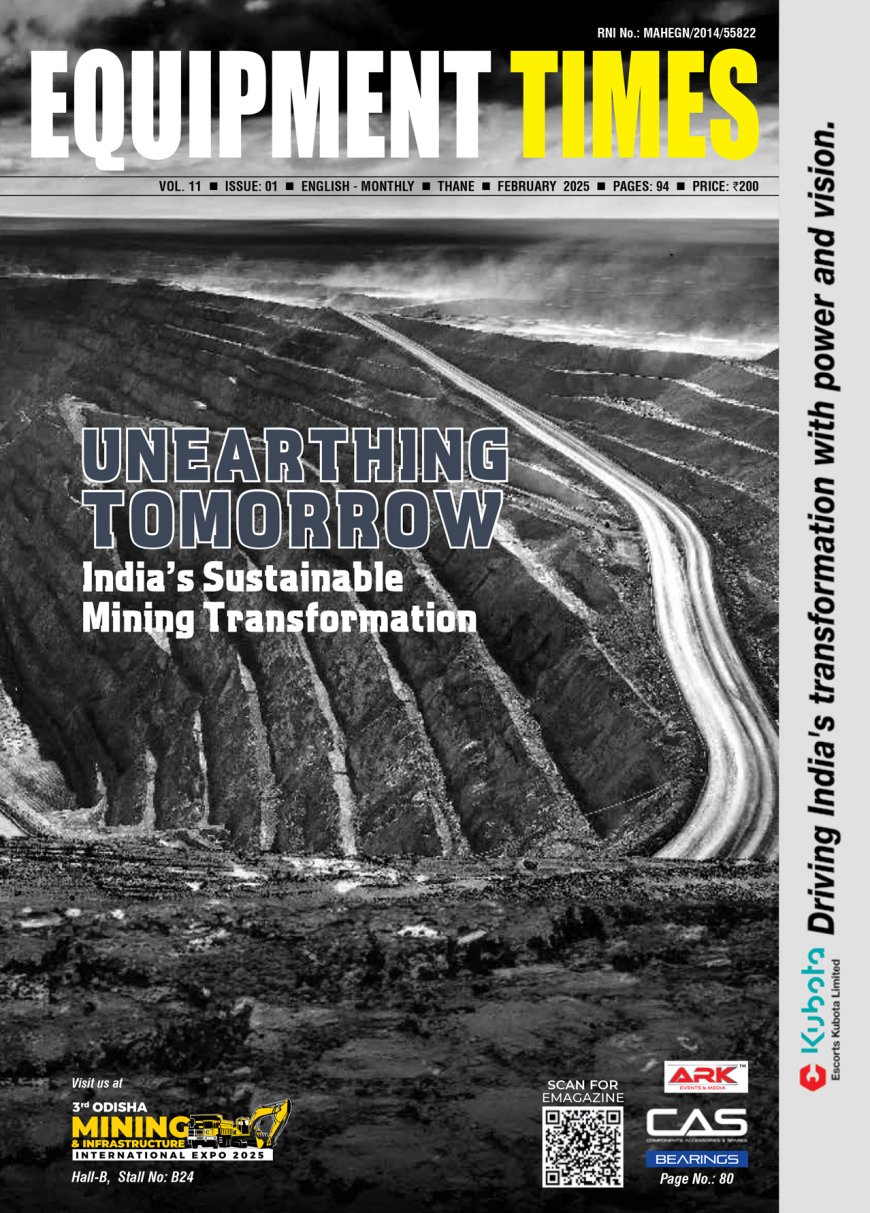The Indian Construction Equipment Industry- Atmanirbhar by FY 2030?
Ritu Goswami AVP and Sector Head, Corporate Ratings, ICRA The Indian construction equipment (CE) industry’s annual sales volumes saw their best-ever performance in FY2023, crossing the historic 1.0 lakh milestone. The industry had last peaked at 98k units in FY2019,

Ritu Goswami
AVP and Sector Head, Corporate Ratings, ICRA
The Indian construction equipment (CE) industry’s annual sales volumes saw their best-ever performance in FY2023, crossing the historic 1.0 lakh milestone. The industry had last peaked at 98k units in FY2019, after witnessing a robust 18% CAGR between FY2015-FY2019, before the Covid pandemic and the change in emission norms (CEV-III to CEV-IV from October 1, 2021) had dampened the momentum. Nonetheless, as per the Indian Construction Equipment Manufacturing Association (ICEMA), India solidified its position as the third largest CE market in the world (after China and the US) with its excellent performance in FY2023. As per ICEMA, the industry is currently valued at around ~US$ 7 billion, provides employment to over three million people (directly or indirectly) and drives around 8-10% of the country’s GDP.
The primary demand driving industries for the CE in India are road construction, mining, and urban infrastructure and hence, the healthy CE growth in volumes over the past decade are a testament to India’s infrastructure growth story. India has seen an enhanced pace of road construction and rapid activity in metro, high-speed rail projects, airport and port infrastructure development, and an upswing in mining activity, which have all been strong drivers of growth for the CE industry in the past decade.
There is empirical evidence to suggest that there are economic benefits and a positive credit impact from infrastructure spending. In case of India, this so-called “multiplier effect” of spending 1% incremental real GDP on infra-development could boost India’s GDP by at least double that amount. Consequently, to meet India’s aim of reaching a US$5 trillion economy by 2025, the country must invest US$4.5 trillion in infrastructure development through 2030, according to the Department of Economic Affairs, GoI.
The Central Government has committed over US$1.3 trillion under its National Infrastructure Pipeline (NIP) Vision 2025 and sectors like Energy, Roads, Urban, and Railways are to contribute to nearly 70% of the projected capex in infrastructure. The GoI has announced several ambitious schemes – Gatishakti (national master plan for multimodal connectivity), Pradhan Mantri Awas Yojana (PMAY; Housing for All), Bharatmala Pariyojna (Programme for expansion of National Highways by 35,000 km), upgradation of the Railways and the Jal Jeevan Mission (targeting 100% tap water coverage for Indian households), to name a few. In addition, several state governments have also been proactively working on mega infrastructure projects – like Ganga Expressway, Mumbai Trans Harbour Link, the Narmada Valley Development Project etc. – which are expected to continue stimulating CE demand in the country over the medium to long term.
Notwithstanding the healthy growth witnessed, there remains a significant head room for growth, as India’s CE market is under penetrated vis-à-vis global benchmarks. Developed markets such as Japan and Europe have a much higher CE intensity implying better mechanisation and efficiency in construction activity. As such, there is a significant headroom for India to increase the adoption and use of the CE, as it looks to develop infrastructure faster than ever before. In addition, about 35-40% of the domestic CE demand is fulfilled by imports, suggesting potential for increasing manufacturing in India. With less than a 2% share in global CE exports, trade also offers significant growth potential.
To elevate domestic CE as a ‘Champion’ sector would, however, require effort on multiple fronts. Today, the industry faces several challenges – non-consistent demand, import dependence for critical components, cost disadvantage in terms of key production inputs, low-cost long term financing availability and gaps in technology adoption and skill development – to name a few. A lack of sustained domestic demand due to economic cycles or delays/ambiguity in the implementation timelines of infrastructure projects, constrains the OEMs’ ability to assess and invest timely in R&D and capacity creation. Further, the high cost of critical raw materials like steel, availability issues in certain grades of specialty steels, high cost of power and logistics, significantly reduce the cost competitiveness of domestic CE manufacturing, despite abundant cheap labour. Lack of a vendor ecosystem and technical expertise to manufacture crucial components like high-pressure hydraulics systems, electronic control systems, etc. led to high import dependency, which further exposes the industry to fluctuations in forex and international freight costs.
Now, to meet the booming domestic demand, there is an increasing need for modernised and mechanised methods of construction, to ensure timely delivery of projects. The CE industry, therefore, needs to invest both in building capacities and reducing dependence on imports. Given the highly capital-intensive nature, the industry wants the Government to consider a dedicated production-linked incentive (PLI) scheme. The PLI scheme, if granted, will attract substantial domestic and foreign investment in the near to medium term. It is also expected to accelerate export growth, apart from forex savings through import substitutions.
With the developed markets facing sluggishness and India slated to be one of the fastest growing economies over the next decade, global investors are keen to invest in India. While decision regarding dedicated PLI for the sector remains to be seen, the GoI has been introducing many other initiatives to encourage investment in the infrastructure sector, such as the NIP, the Make-in-India campaign, the PLI scheme for auto component manufacturing (which has over-lap with CE industry) and alternative Chemistry Cell battery storage, creation of the National Bank for Financing Infrastructure and Development (NBFID) and the National Investment and Infrastructure Fund (NIIF) for facilitating long-term infrastructure funding etc. In addition, various sector-specific tax reforms have led to improvement in the ease of doing business in the country (as reflected in improvement in India’s ranking from 142 in 2014 to 63 in 2019). Also, the changing geo-political dynamics, with the global OEMs looking to diversify their supply chains outside China (China plus one business strategies), presents a golden opportunity for increasing manufacturing of CE and developing a robust CE component eco-system in India.
According to ICEMA, the Indian CE industry has the potential to become the 2nd largest globally, with ~2.5 lakh annual volumes and US$25 billion in revenues by 2030. While the Government’s sustained focus on infrastructure development remains a positive, a focus on debottlenecking the issues to accelerate the pace of execution of the ongoing infrastructure projects would enable the industry plan better to cater to the emerging demand for equipment. This can ultimately lead to rapid economic development and improved quality of life for citizens across India.
Hits: 336










